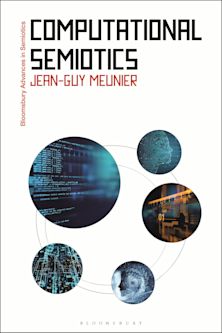- Home
- ACADEMIC
- Linguistics
- Semiotics
- The Semiotics of Architecture in Video Games
You must sign in to add this item to your wishlist. Please sign in or create an account
Description
Video games are among the most popular media on the planet, and billions of people inhabit these virtual worlds on a daily basis. This book investigates the architecture of video games, the buildings, roads and cities in which gamers play out their roles. Examining both the aesthetic aspects and symbolic roles of video game architecture as they relate to gameplay, Gabriele Aroni tackles a number of questions, including:
- How digital architecture relates to real architecture
- Where the inspiration for digital gaming architecture comes from, and how it moves into new directions
- How the design of virtual architecture influences gameplay and storytelling.
Looking at how architecture in video games communicates and interacts with players, this book combines semiotics and architecture theory to display how architecture is used in a variety of situations, with different aims and results. Using case studies from NaissanceE, Assassin's Creed II and Final Fantasy XV, The Semiotics of Architecture in Video Games discusses the techniques used to create successful virtual spaces and proposes a framework to analyse video game architecture, ultimately explaining how to employ architectural solutions in video games in a systematic and effective way.
Table of Contents
1. The Semiotics of Architecture
2. The Semiotics of Digital Games Spaces
3. Assassin's Creed II
4. Final Fantasy XV
5. NaissanceE
Conclusions
Further Research
Bibliography
Ludography
Works of Art
Product details

| Published | 08 Sep 2022 |
|---|---|
| Format | Ebook (PDF) |
| Edition | 1st |
| Extent | 192 |
| ISBN | 9781350152328 |
| Imprint | Bloomsbury Academic |
| Illustrations | 35 bw illus |
| Series | Bloomsbury Advances in Semiotics |
| Publisher | Bloomsbury Publishing |
About the contributors
Reviews
-
This work by Gabriele Aroni is highly significant, having implications for the ways in which virtual architectures are evolving structurally, symbolically, and aesthetically, and how video game architecture provides a framework for understanding digital ways of creating texts. Aroni looks penetratingly at the points of contact between digital and real-world architecture and art, utilizing both semiotic concepts and the theory of anticipatory play. Aroni shows that the virtual world is both a representation of the real world and an interpretation of its possibilities, extending it considerably through virtual architecture.
Marcel Danesi, University of Toronto, Canada
-
Aroni's writing is equally informed on architecture and video games and frequently connects the two in revealing ways. The book shows how virtual architecture is not just a setting for gameplay, but that its influence on level design communicates stories and engages the player.
Grant Tavinor, Lincoln University, New Zealand
-
[A] profoundly insightful work which can be appreciated by a broad readership, from scholars interested in semiotics, to game studies, to architecture, and the visual arts. It is also of interest to game designers and creatives ...The theory and scholarship are solid and innovative, and provide a fresh insight on a still young medium.
International Journal for the Semiotics of Law

ONLINE RESOURCES
Bloomsbury Collections
This book is available on Bloomsbury Collections where your library has access.



































